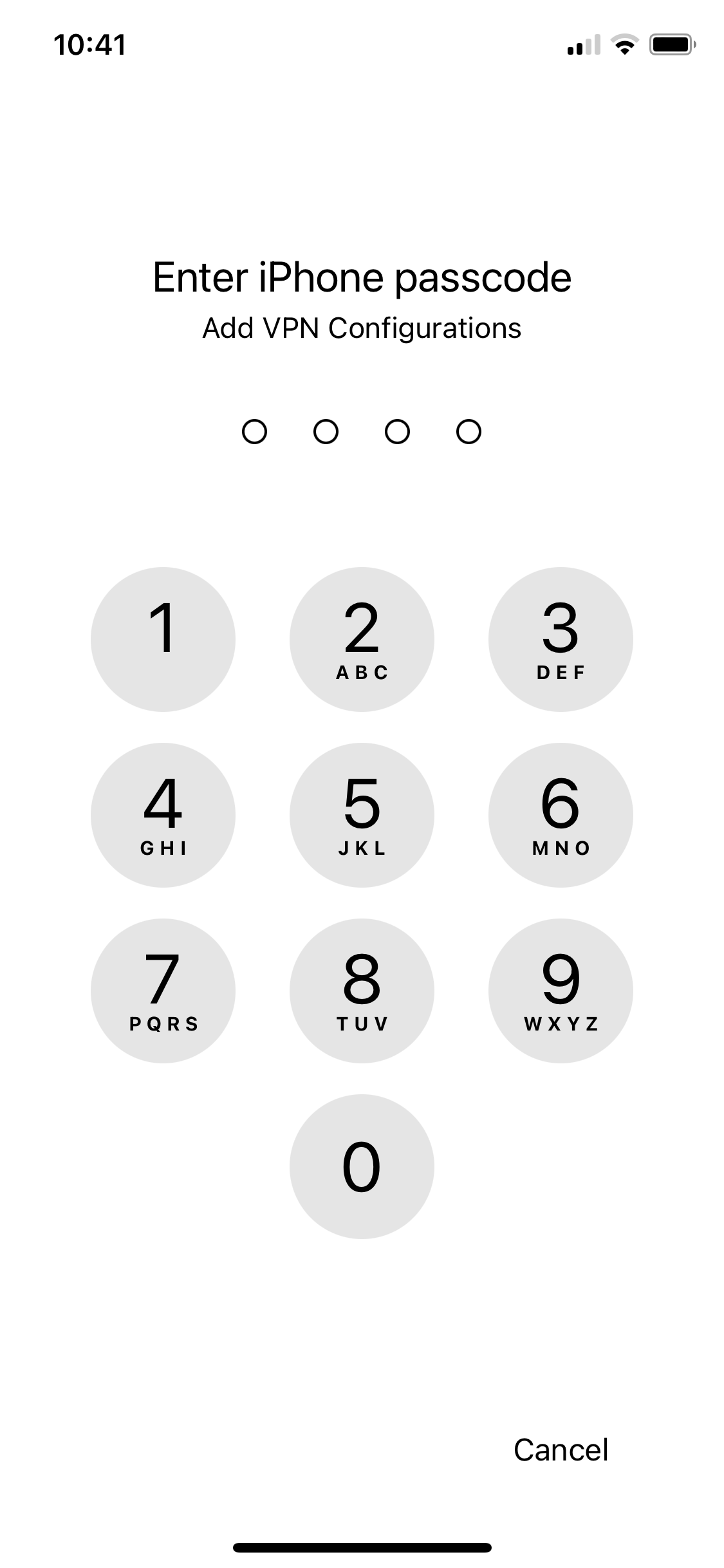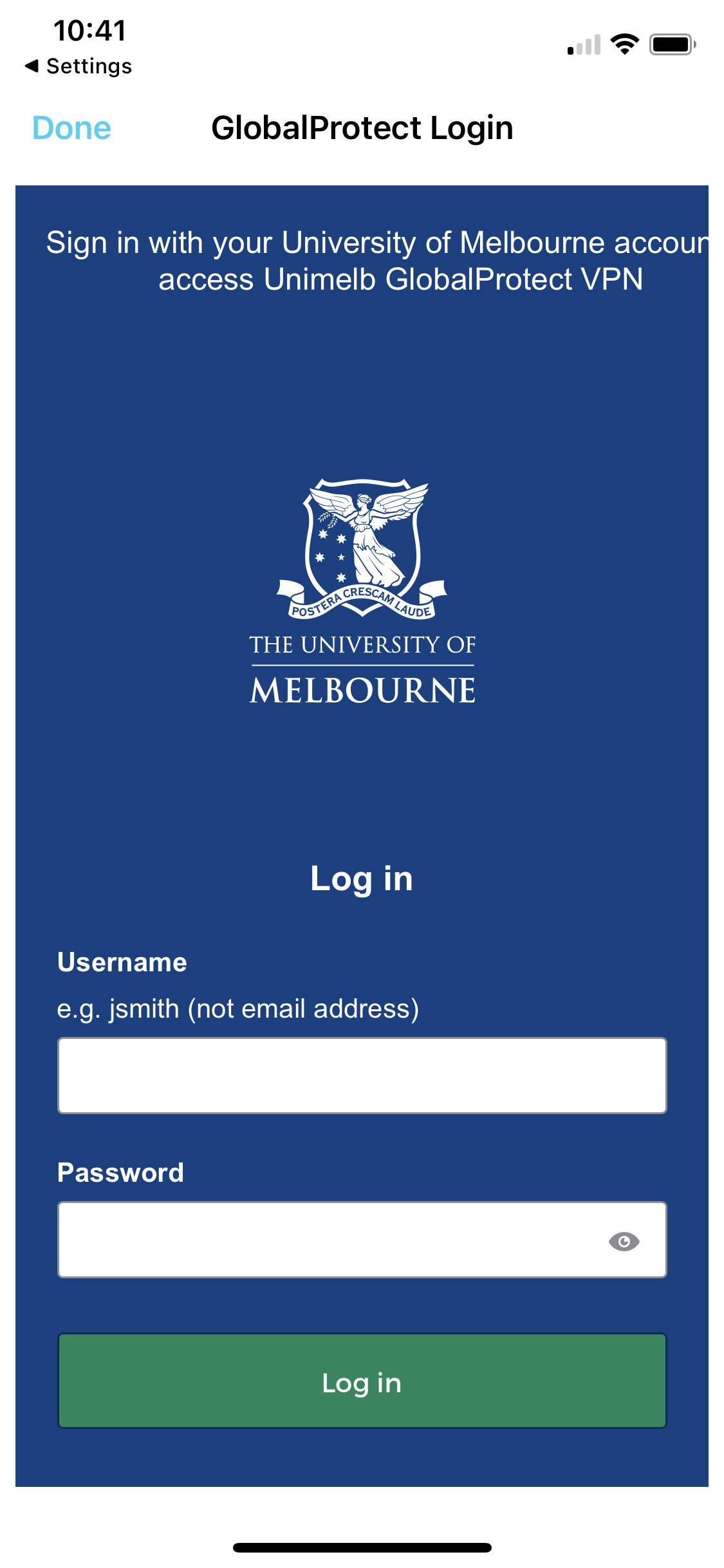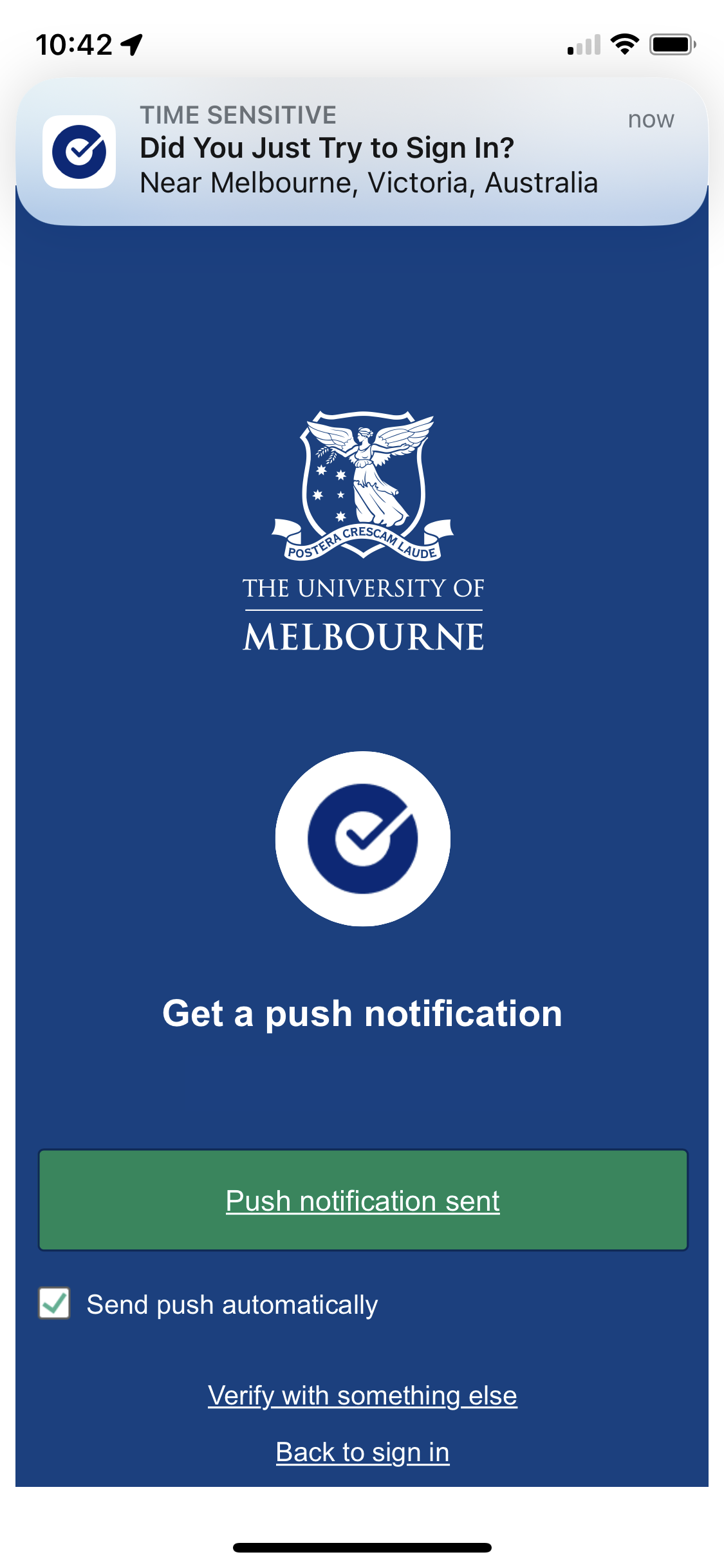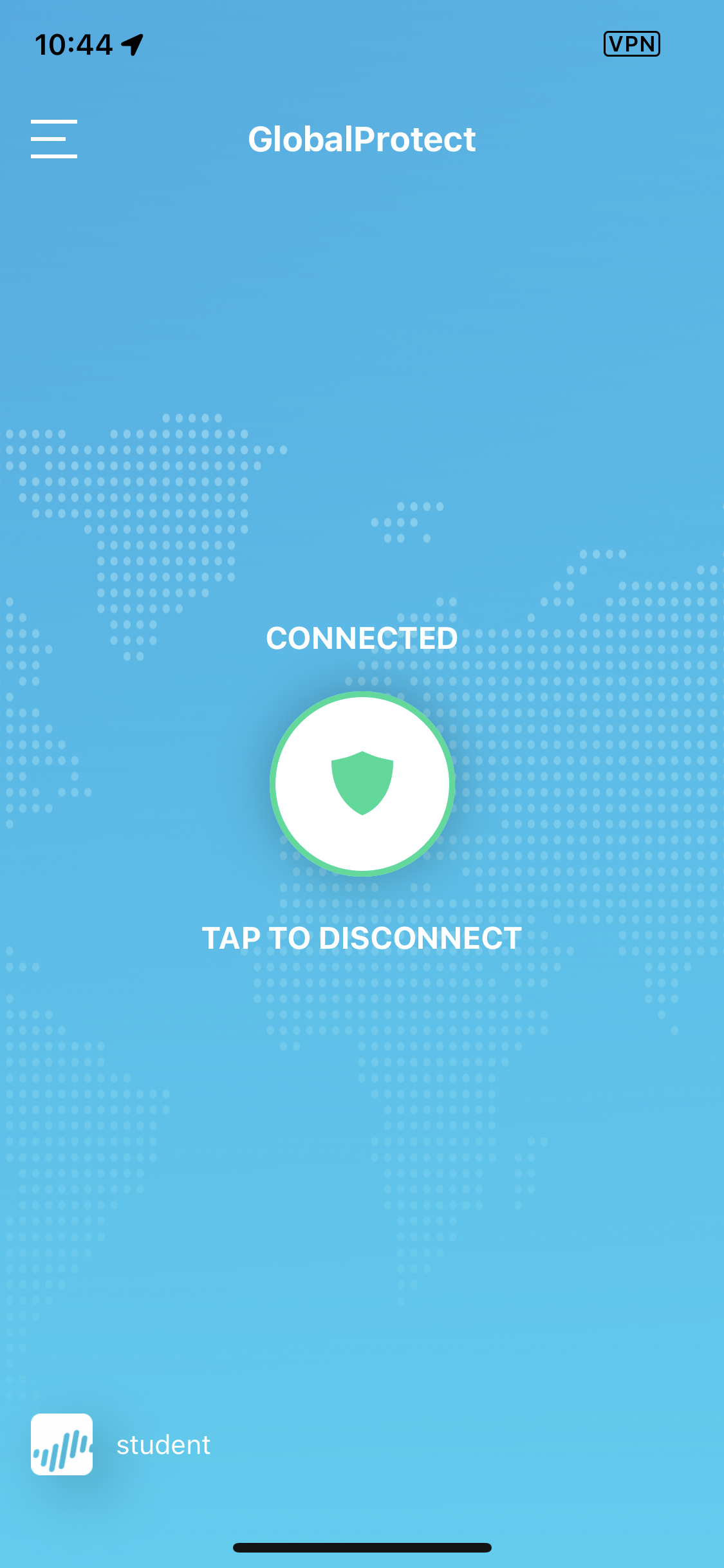VPN
What is a VPN?
The Virtual Private Network (VPN) service allows you to securely 'tunnel' into the campus network from outside the university, and access services as if you were on campus. Your device simply needs to be connected to the internet. It can also be used with on-campus networks, UniWireless and eduroam.
This service is provided to students free of charge. You can use the university's VPN service to:
- Connect to a file share (mapped drive)
- Print to a networked printer from off-campus
- Remotely connect to a campus computer
- Secure data transactions with the university's network
There two available VPN services are:
- Palo Alto GlobalProtect
- FortiClient - recommended for use by students studying in Mainland China only
General VPN (Palo Alto GlobalProtect)
I was previously using Cisco AnyConnect. Can I continue using it?
Cisco AnyConnect support has ended and the University has transitioned to using a new system. You may uninstall Cisco AnyConnect from your device if you no longer require it and install Palo Alto GlobalProtect.
Palo Alto GlobalProtect is the client used to connect to the general University of Melbourne VPN. It is available for installation on Windows, Mac, Linux and mobile devices.
Downloading GlobalProtect
To connect to the University’s VPN, you’ll need Palo Alto GlobalProtect. Install it on your personal computer or device via the appropriate link below:
Windows (64-bit) macOS Ubuntu Linux
iOS / iPadOS Android
Can't see your operating system above?
Alternative VPN download links
After installation, a Welcome/Getting Started screen will show up on desktop devices. Look for GlobalProtect as an icon:
- Windows: Bottom-right taskbar (may need to click the up arrow to "Show hidden icons")
- macOS: Top-right toolbar
Using a University device?
Computers running the University Managed Operating Environment (MOE) have Palo Alto GlobalProtect pre-installed. If you can't find Palo Alto GlobalProtect on your device, try installing it via the Software Center (Windows) or Self Service app (macOS). If you have any further difficulties, please contact the Service Centre at +61 3 8344 0888.
Setting up GlobalProtect
-
Windows
- Enter vpn.unimelb.edu.au in the ‘Portal’ field and click Connect.
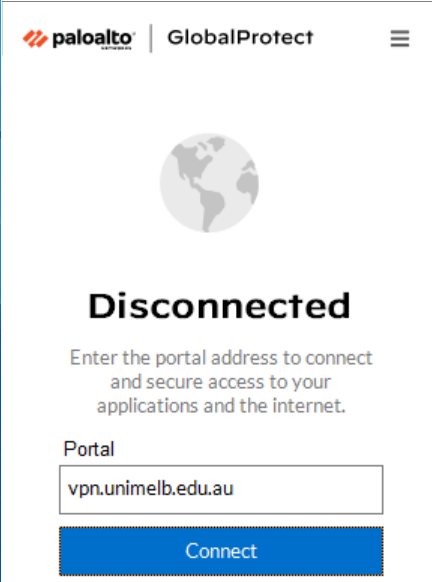
- Use your username and password in the SSO sign-in window, which will open in your preferred browser (e.g. Google Chrome), then click Log in.
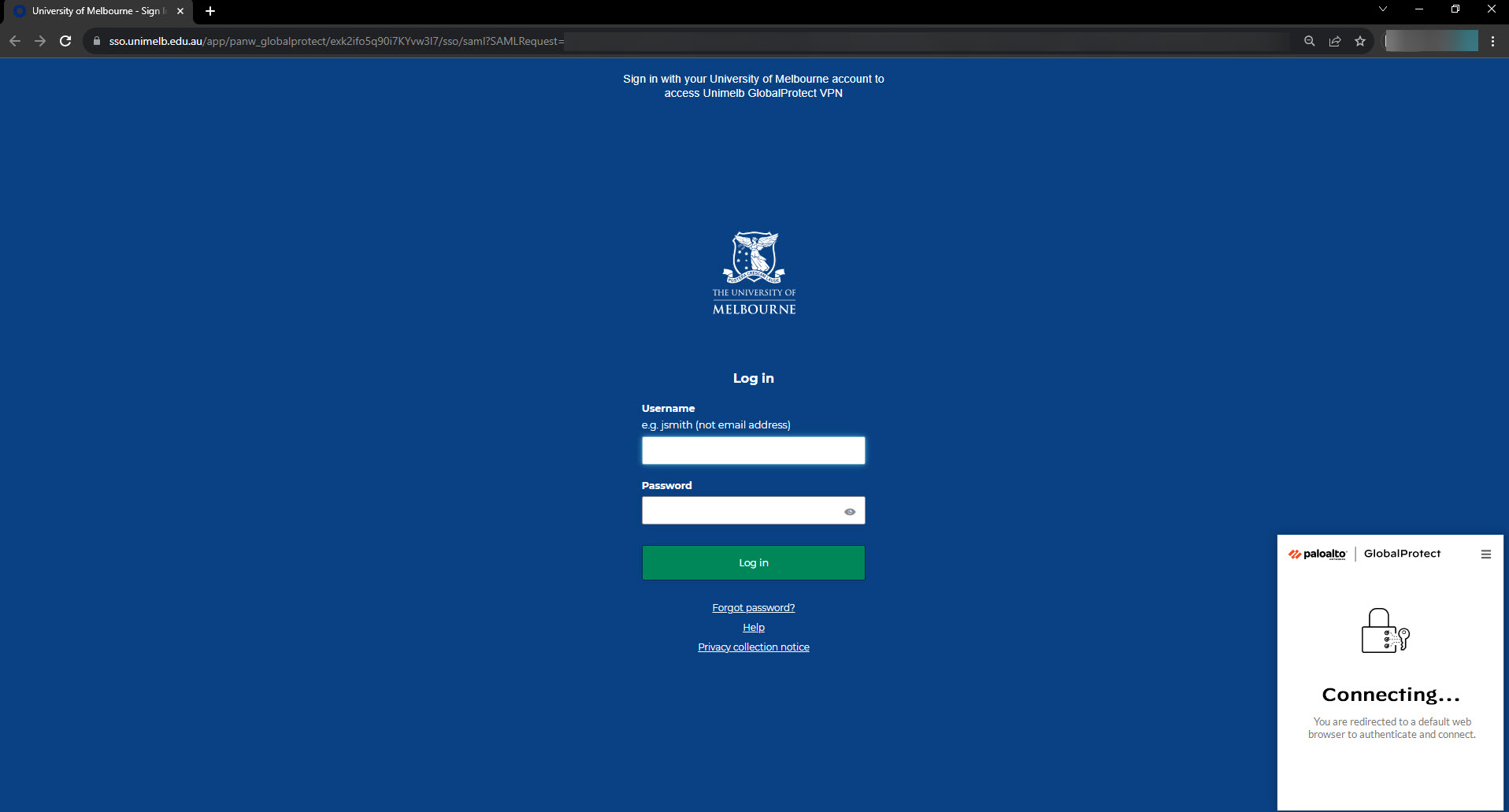
- Confirm your sign-in using Okta Verify or your chosen authentication method. First time users will be prompted to select their security method before confirming using their device.
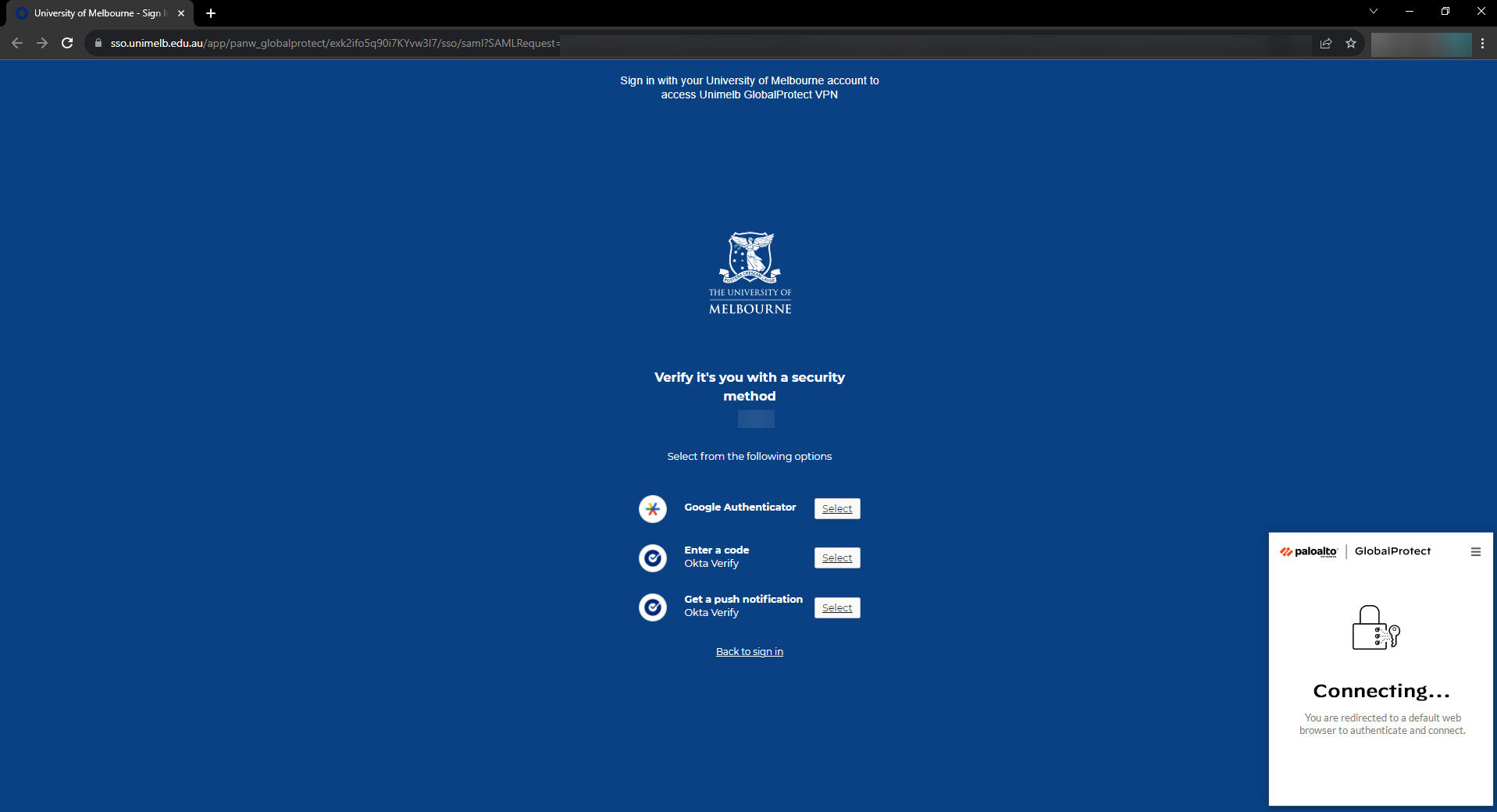
- Once authentication is complete, click Open GlobalProtect to securely launch the VPN connection.
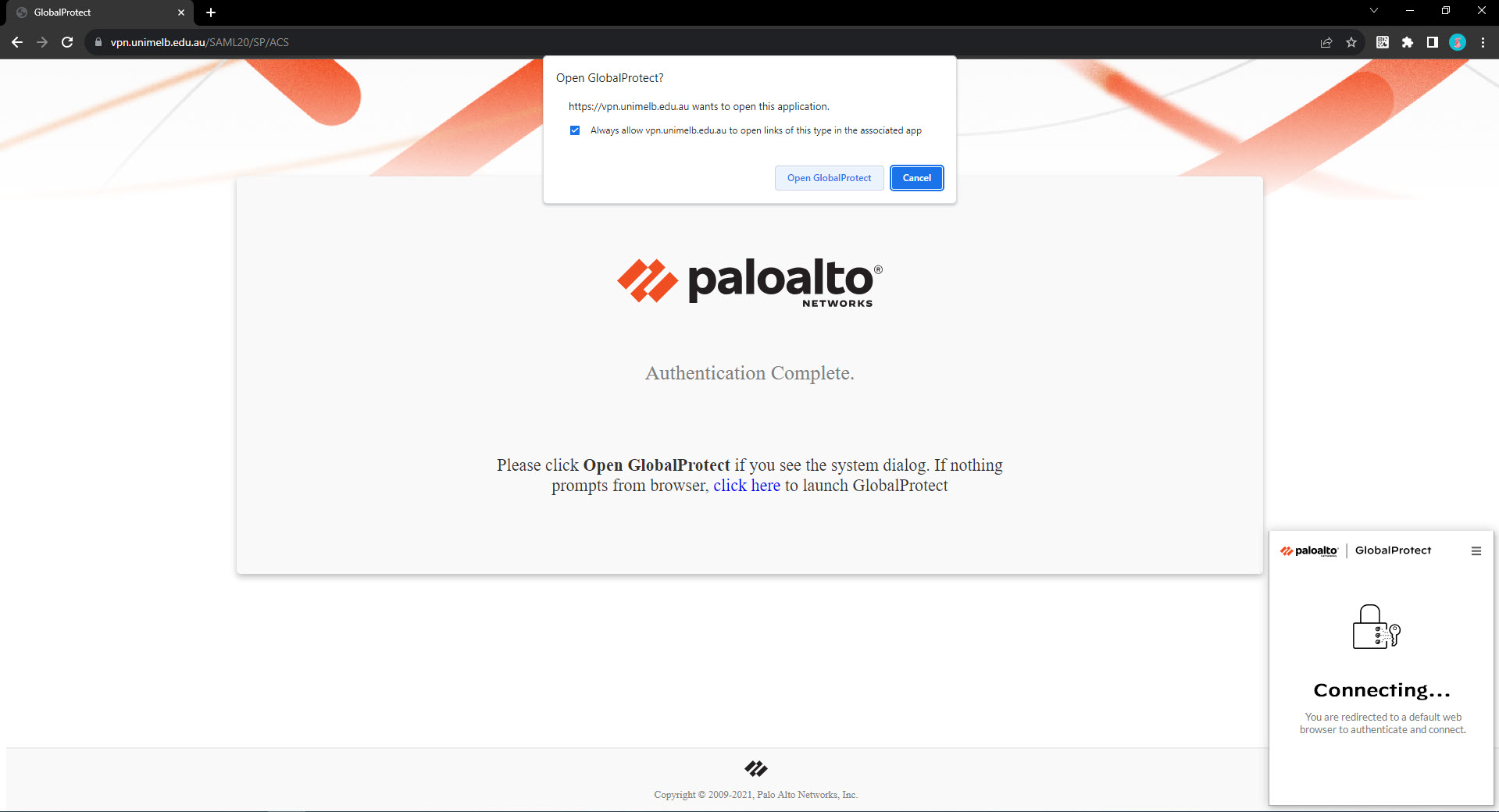
- You're now connected to the VPN, enabling you to access University resources as if you were on campus. The gateway will display as student.
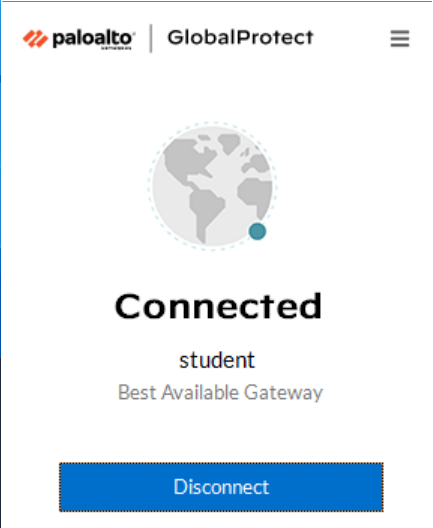
- To disconnect, click on the GlobalProtect icon and click Disconnect.
- To reconnect, follow steps 1-5 above. The ‘Portal’ field should be pre-filled with vpn.unimelb.edu.au.
- Enter vpn.unimelb.edu.au in the ‘Portal’ field and click Connect.
-
macOS
- Enter vpn.unimelb.edu.au in the ‘Portal’ field and click Connect.
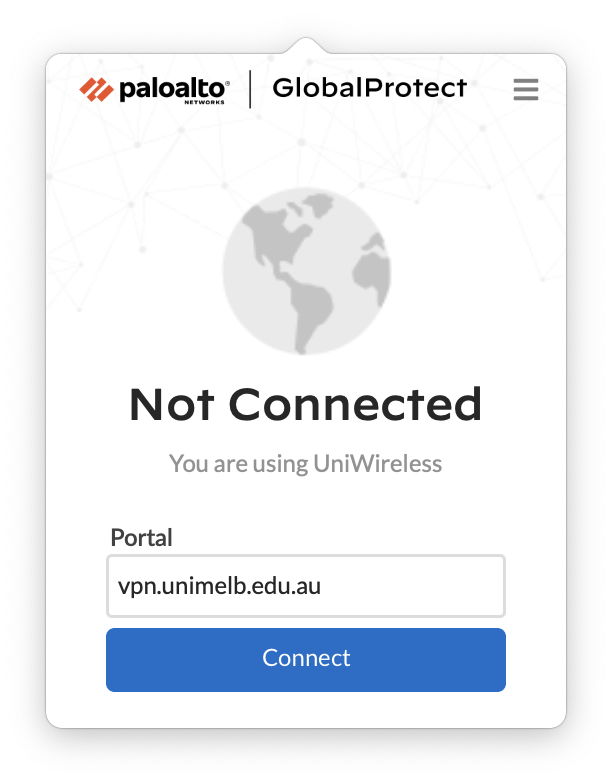
- Use your username and password in the SSO sign-in window, which will open in your preferred browser (e.g. Safari), then click Log in.
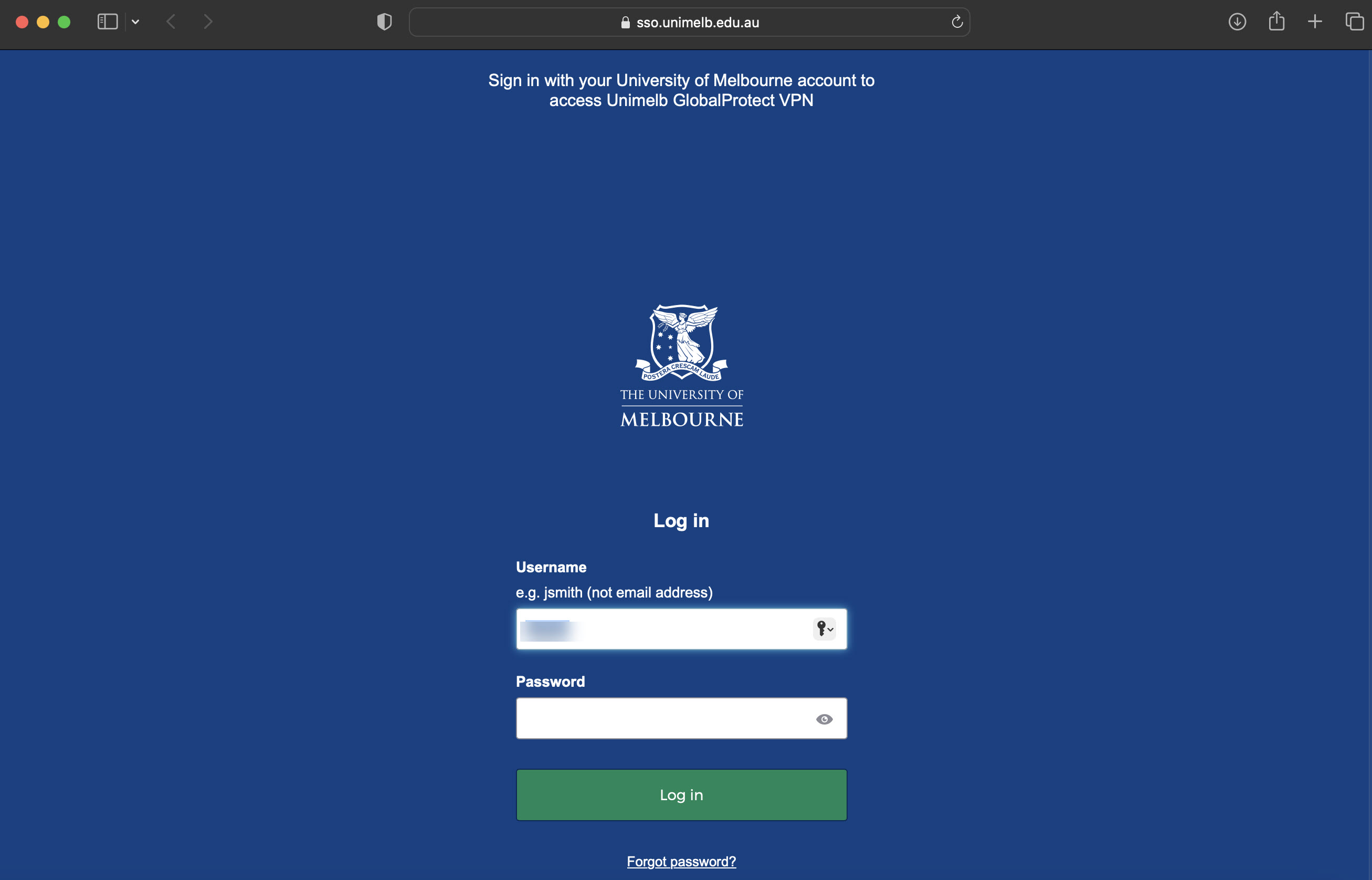
- Confirm your sign-in using Okta Verify or your chosen authentication method. First time users will be prompted to select their security method before confirming using their device.
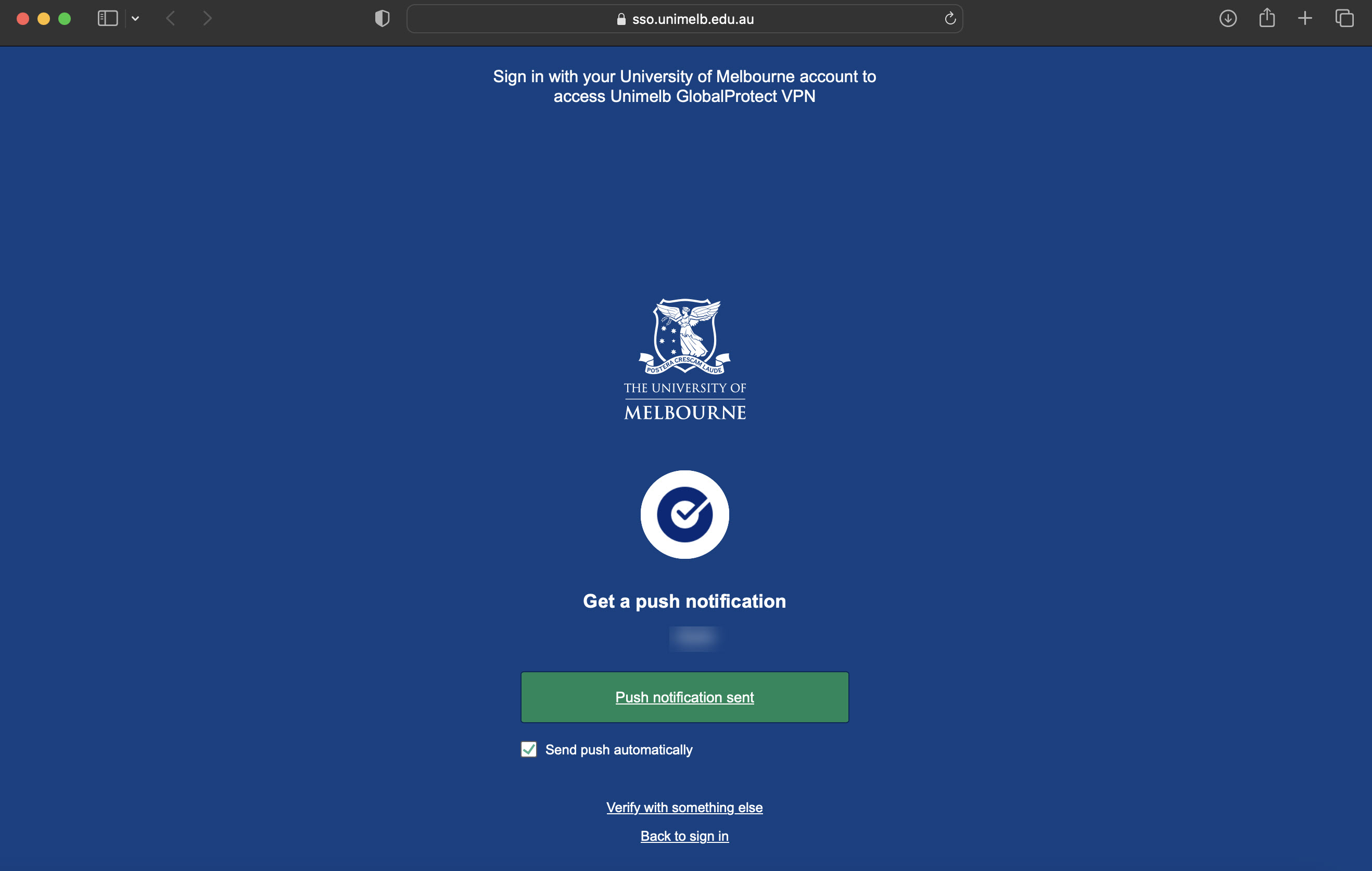
- Once authentication is complete, click Allow to securely launch the VPN connection.
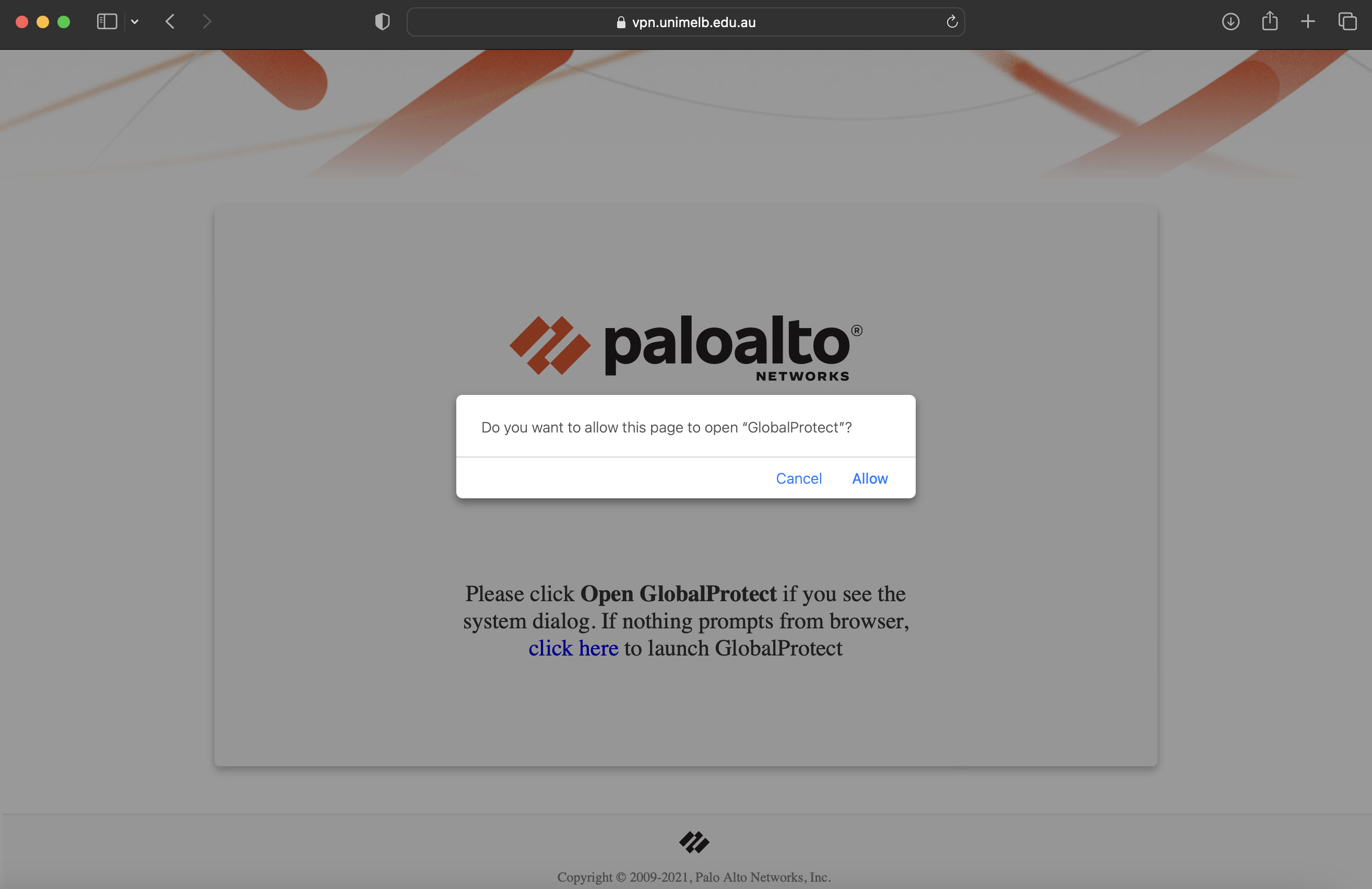
- You're now connected to the VPN, enabling you to access University resources as if you were on campus. The gateway will display as student.
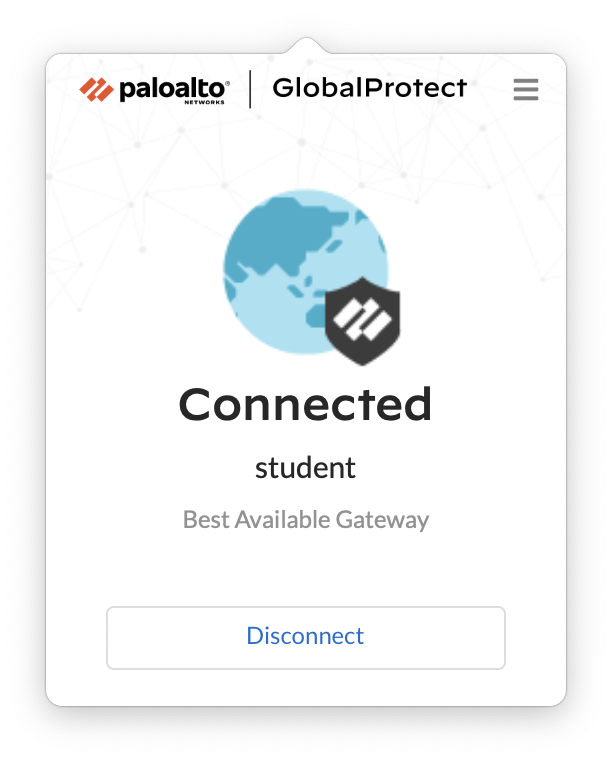
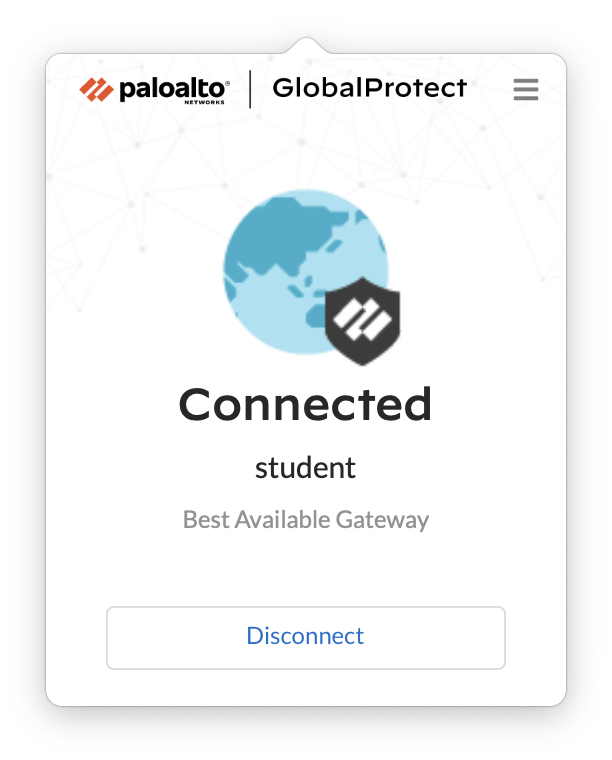
- To disconnect, click on the GlobalProtect icon and click Disconnect.
- To reconnect, follow steps 1-5 above. The ‘Portal’ field should be pre-filled with vpn.unimelb.edu.au.
- Enter vpn.unimelb.edu.au in the ‘Portal’ field and click Connect.
-
iOS / iPadOS
- Open the PaloAlto GlobalProtect App

- Choose whether you would like notifications by tapping Allow or Don’t Allow.
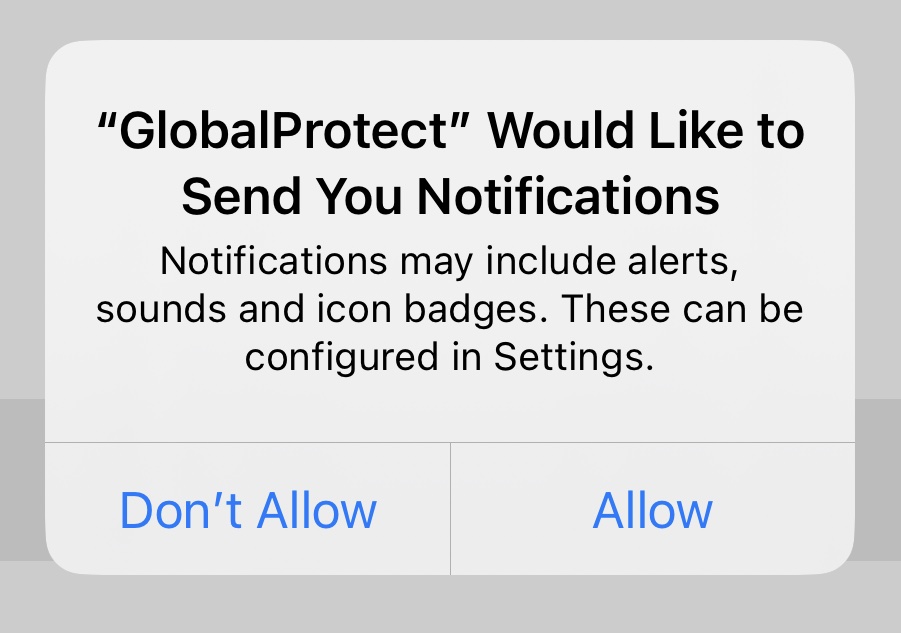
- Enter vpn.unimelb.edu.au as the portal address and tap Connect.
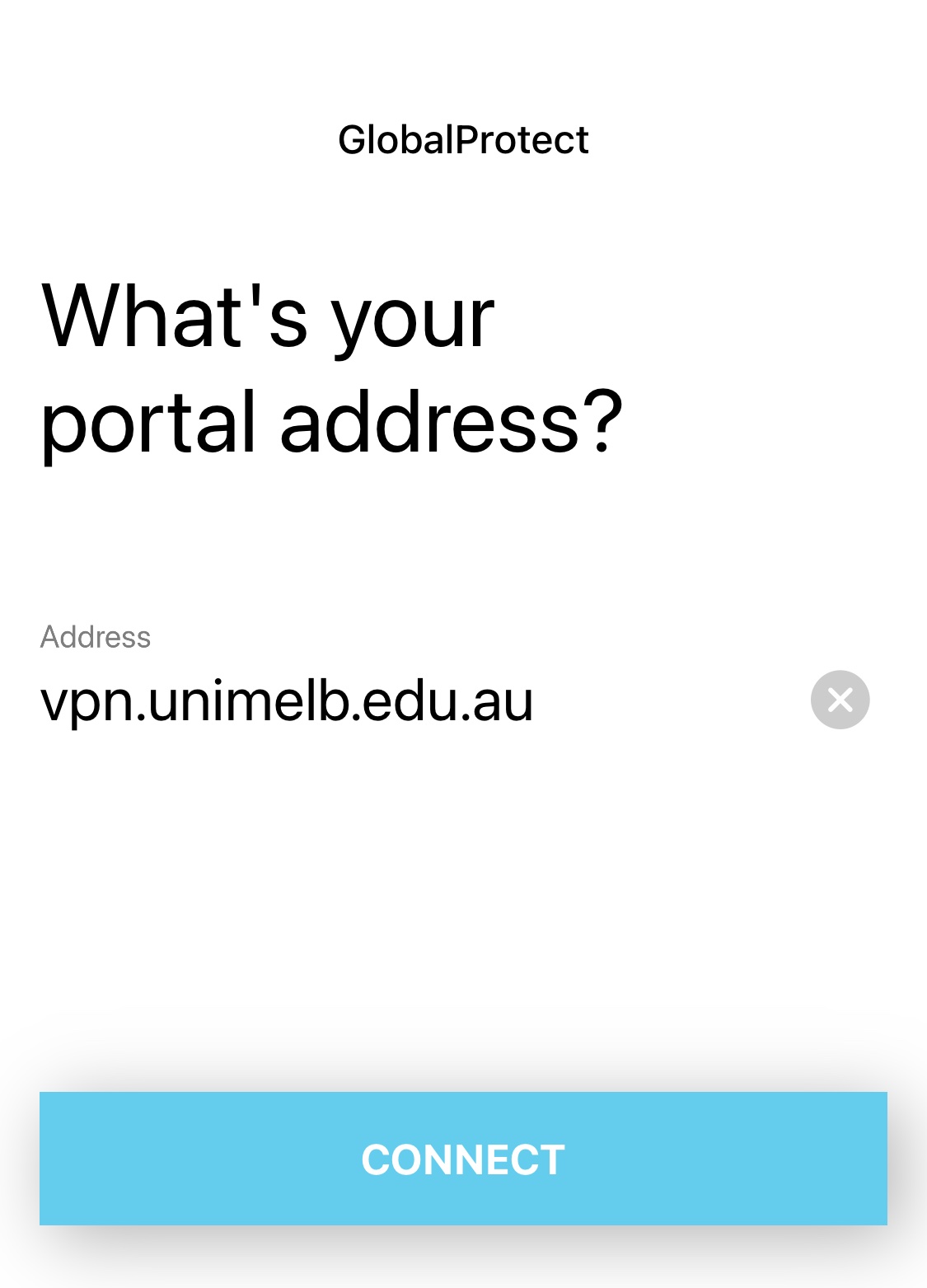
- When asked to ‘Add VPN Configurations’, tap Allow.
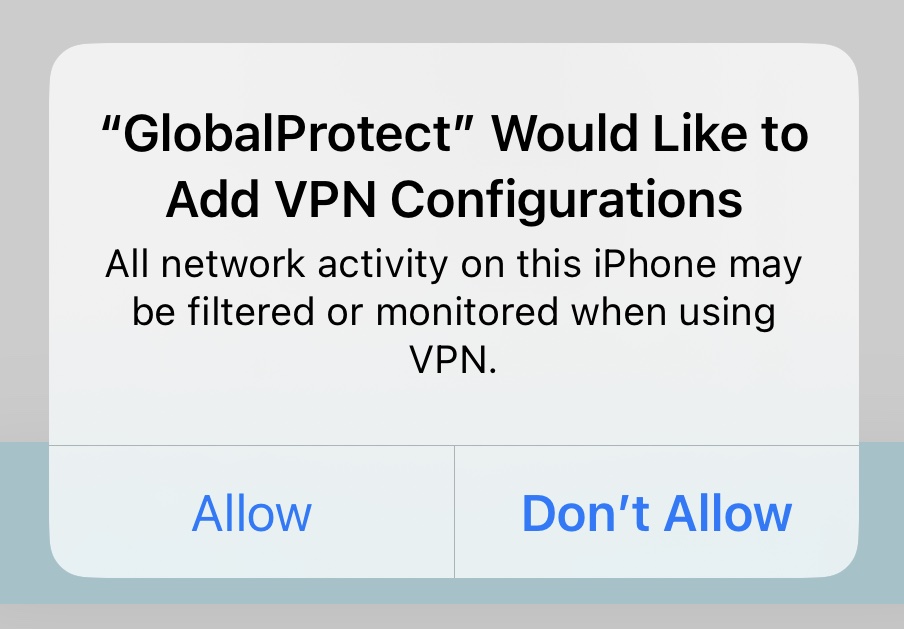
- (In Settings) Enter your device’s passcode if prompted and you will be taken back to the GlobalProtect App.
- Use your username and password in the SSO sign-in window then tap Log in.
- Confirm your sign-in using Okta Verify or your chosen authentication method.
- You're now connected to the VPN, enabling you to access University resources as if you were on campus. The gateway will display as student in the bottom left corner.
- To disconnect, open the GlobalProtect app, tap the "Tap to Disconnect" green shield icon in the centre of the screen.
- To reconnect, tap the "Tap to Connect" grey shield icon in the centre of the screen and follow steps 6-9. You do not need to re-enter the portal address.
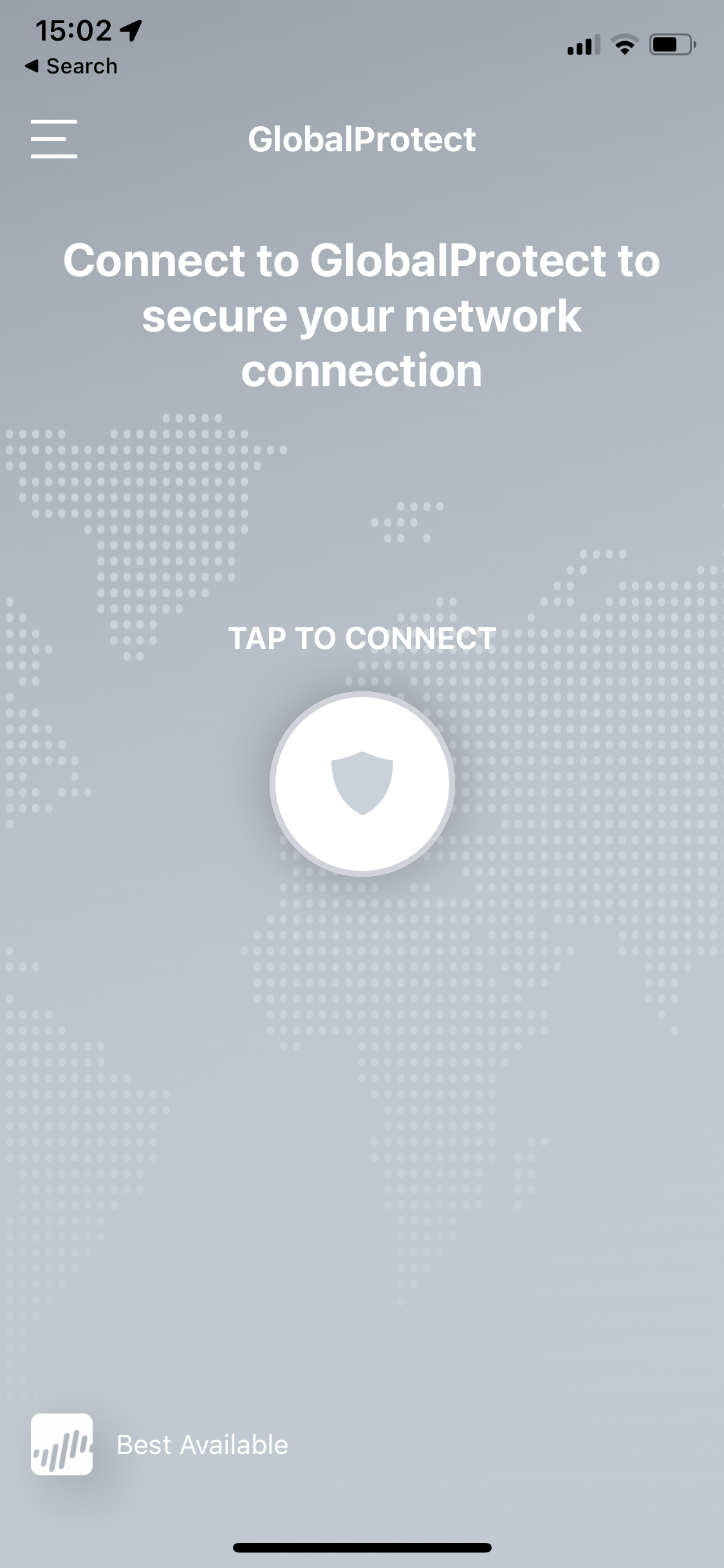
- Open the PaloAlto GlobalProtect App
-
Android
- Open the PaloAlto GlobalProtect App.

- When you first open the GlobalProtect app, you are informed about the data collection and the Android VPNService. Once you have read through the information, tap OK.
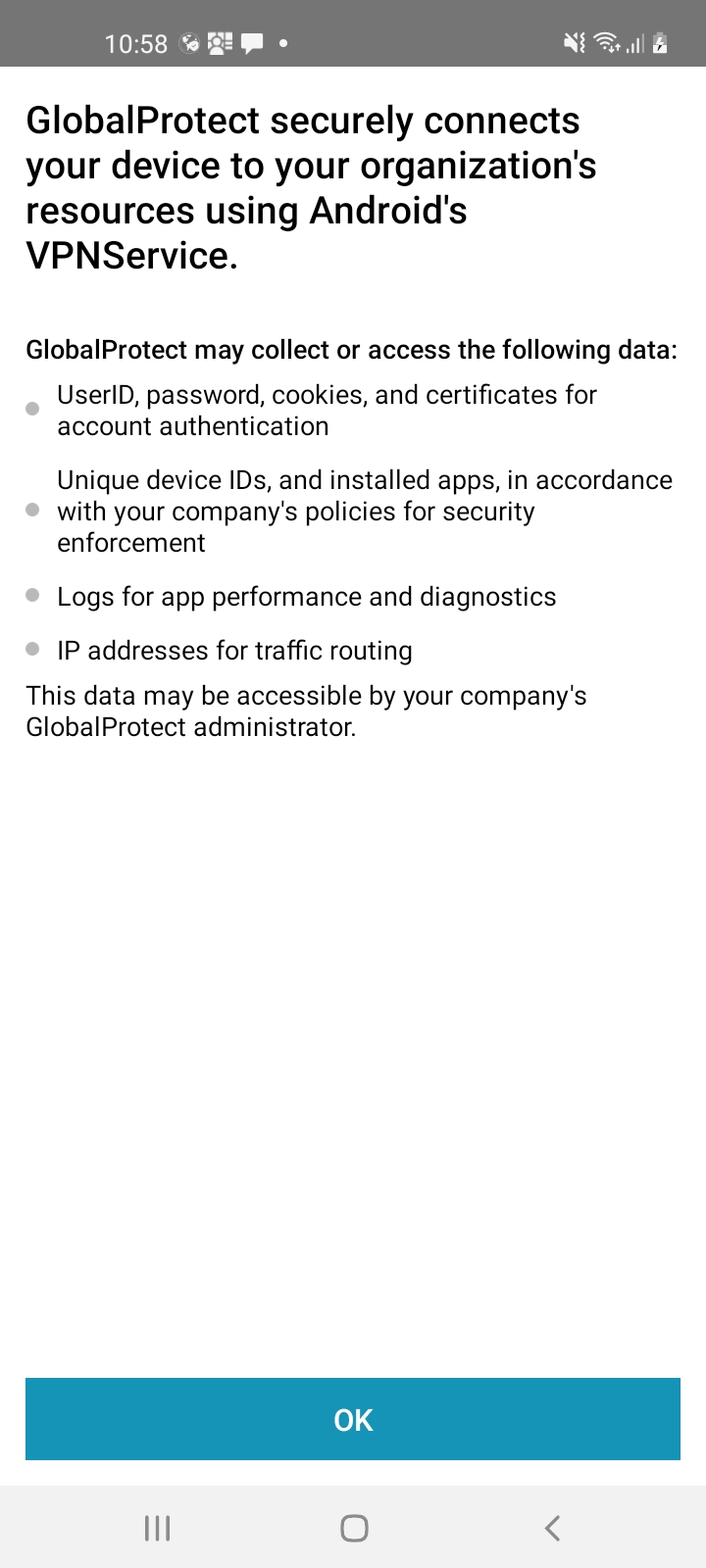
- Enter vpn.unimelb.edu.au as the portal address and tap Connect.
- Use your username and password in the SSO sign-in window then tap Log in.
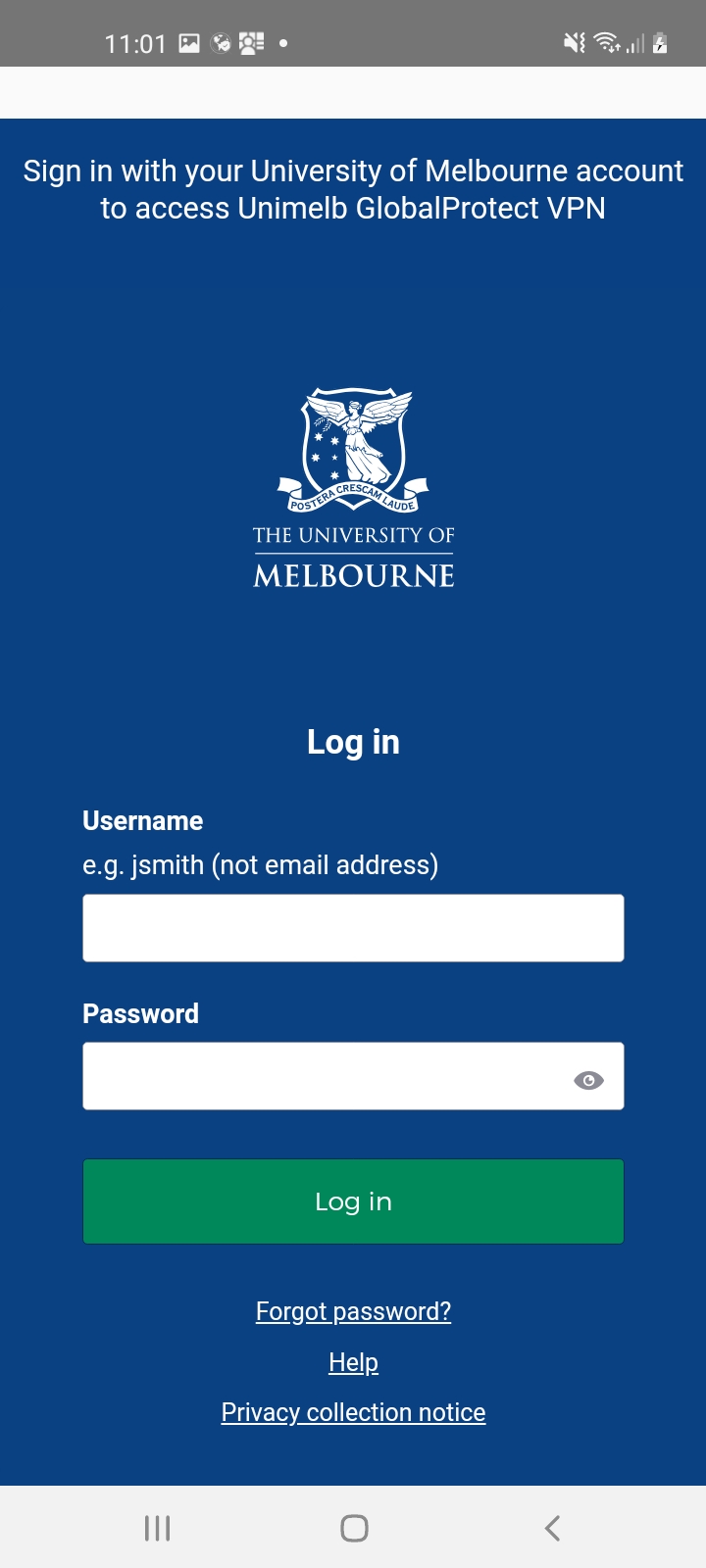
- Confirm your sign-in using Okta Verify or your chosen authentication method.
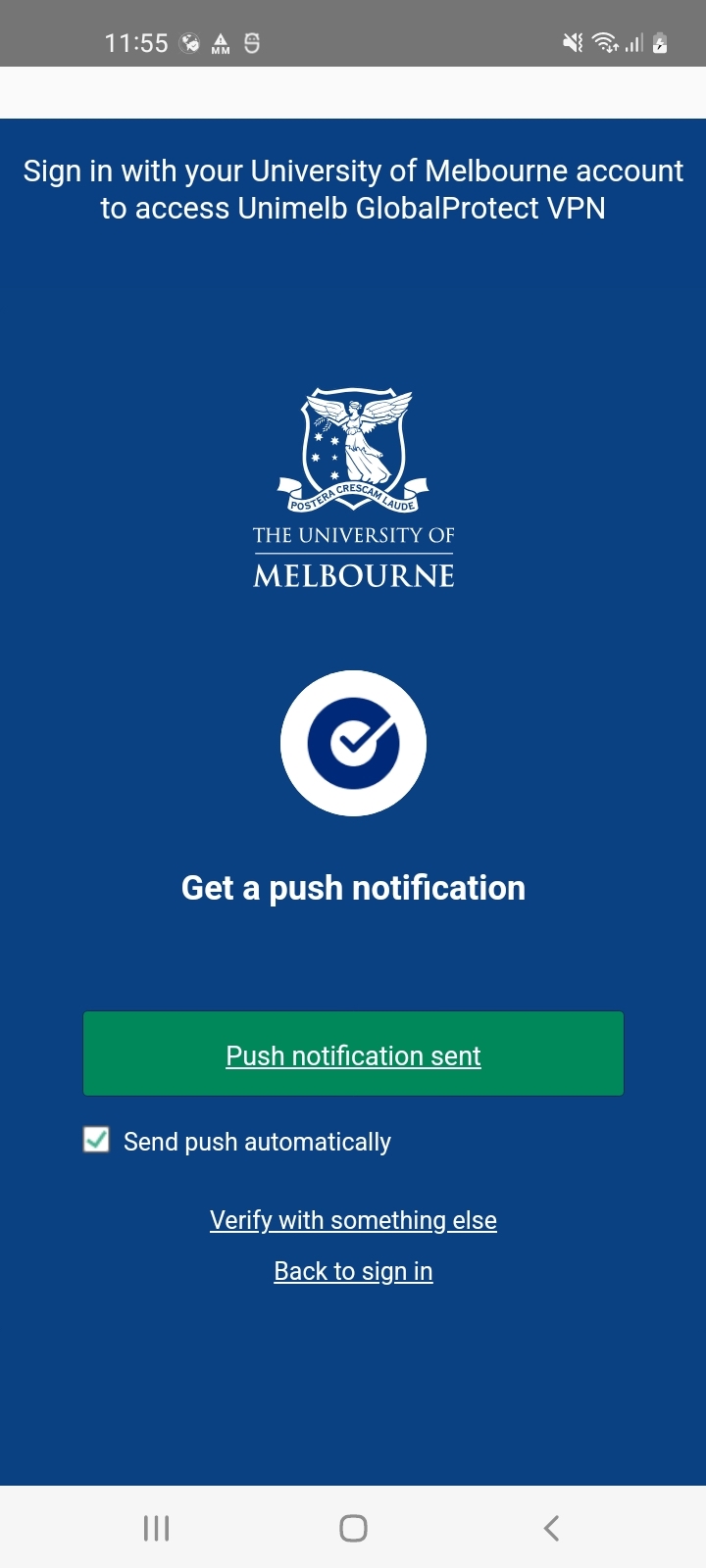
- When the Connection request pop-up appears, tap OK to 'set up a VPN connection'.
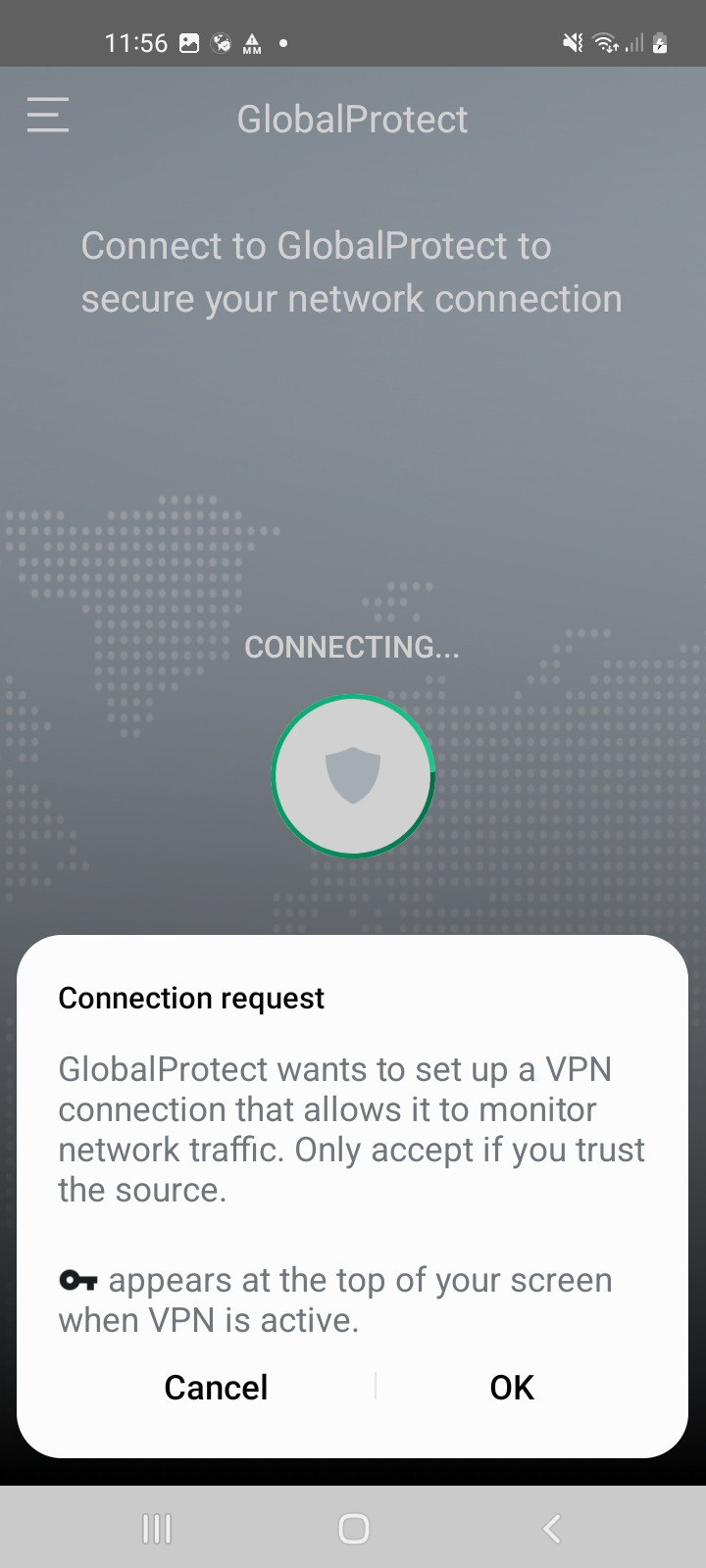
- You're now connected to the VPN, enabling you to access University resources as if you were on campus.

- To disconnect, open the GlobalProtect app, tap the green shield icon in the centre of the screen.
- To reconnect, tap the "Tap to Connect" grey shield icon in the centre of the screen and follow steps 4-6. You do not need to re-enter the portal address or re-confirm the Connection request.

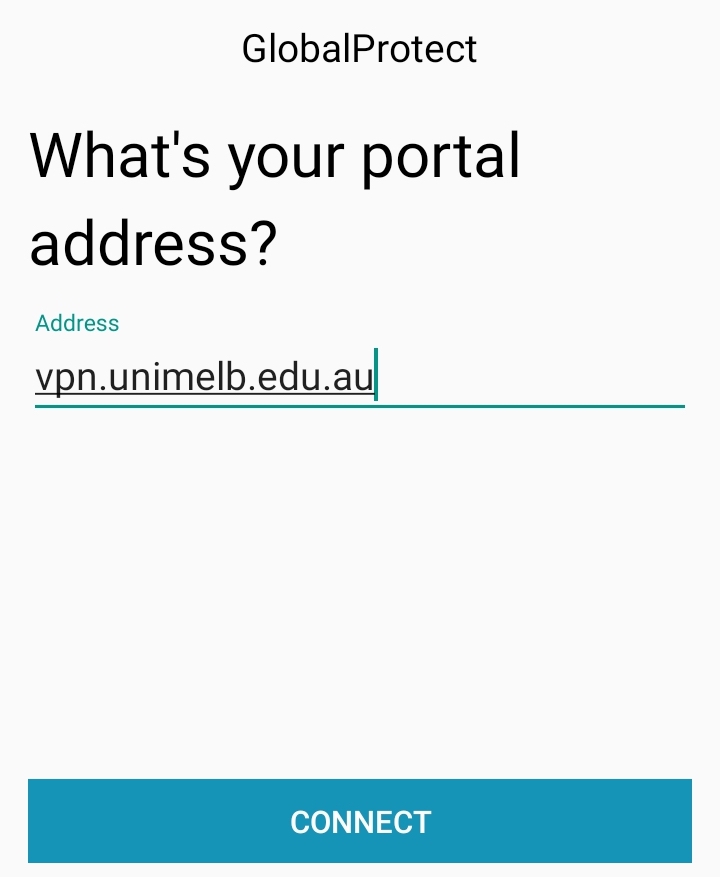
- Open the PaloAlto GlobalProtect App.
Linux (Ubuntu/Rocky) set up instructions can be found here.
Mainland China VPN (FortiClient)
FortiClient VPN is offered to students in China who require access to University services and files. It has been optimised to improve the student experience from within mainland China. You will only be able to log in to one device at a time and you must ensure no third-party VPNs are running in the background. Please only use FortiClient if you are in China.
FortiClient VPN Installation Guide
Google Scholar is not compatible with the FortiClient VPN. Alternative search options include the library’s Discovery and Library Guides to find academic databases for your discipline or topic area.
